Graco 332514J Electric DynaStar Pump User manual
- Category
- Baby furniture
- Type
- User manual
This manual is also suitable for

332514J
Instructions
Dyna-Star
®
HP and
HF Pump
Provides lubricant flow and pressure to operate a single line automatic lubrication
system. For automatic lubrication systems only. For professional use only.
Not approved for use in explosive atmospheres or hazardous locations.
Models: Page 2
Important Safety Instructions
Read all warnings and instructions in this
manual. Save these instructions.
EN

Models
2 332514J
Models
Pump
Models
Tube in
Tube
HP
Pump
HF
Pump
Vent
Valve
Compatible Reservoirs Maximum Working Pressure
35/60
Pound
90/120
Pound
400
Pound
3500 psi
24.1 MPa, 241 bar
5000 psi
34.47 MPa, 344 bar
77X000 X X X
77X001 X X X X
77X002 X X X X
77X003 X X X X
77X011 X X X X X
77X012 X X X X X
77X013 X X X X X
77X014 X X X
77X015 X X X
77X016 X X X

Warnings
332514J 3
Warnings
The following warnings are for the setup, use, grounding, maintenance, and repair of this equipment. The exclama-
tion point symbol alerts you to a general warning and the hazard symbols refer to procedure-specific risks. When
these symbols appear in the body of this manual or on warning labels, refer back to these Warnings. Product-specific
hazard symbols and warnings not covered in this section may appear throughout the body of this manual where
applicable.
FIRE AND EXPLOSION HAZARD
When flammable fluids are present in the work area, such as gasoline and windshield wiper fluid, be
aware that flammable fumes can ignite or explode. To help prevent fire and explosion:
• Use equipment only in well ventilated area.
• Eliminate all ignition sources, such as cigarettes and portable electric lamps.
• Keep work area free of debris, including rags and spilled or open containers of solvent and gasoline.
• Do not plug or unplug power cords or turn lights on or off when flammable fumes are present.
• Ground all equipment in the work area.
• Use only grounded hoses.
• Stop operation immediately if static sparking occurs or you feel a shock. Do not use equipment
until you identify and correct the problem.
• Keep a working fire extinguisher in the work area.
+
SKIN INJECTION HAZARD
High-pressure fluid from dispensing device, hose leaks, or ruptured components will pierce skin. This
may look like just a cut, but it is a serious injury that can result in amputation. Get immediate surgical
treatment.
• Do not point dispensing device at anyone or at any part of the body.
• Do not put your hand over the fluid outlet.
• Do not stop or deflect leaks with your hand, body, glove, or rag.
• Follow the Pressure Relief Procedure when you stop dispensing and before cleaning, checking, or
servicing equipment.
• Tighten all fluid connections before operating the equipment.
• Check hoses and couplings daily. Replace worn or damaged parts immediately.
WARNINGWARNINGWARNING
WARNING

Warnings
4 332514J
PRESSURIZED EQUIPMENT HAZARD
Over-pressurization can result in equipment rupture and serious injury.
• A pressure relief valve is required at each pump outlet.
• Follow Pressure Relief Procedure in this manual before servicing.
PRESSURIZED ALUMINUM PARTS HAZARD
Use of fluids that are incompatible with aluminum in pressurized equipment can cause serious chemical
reaction and equipment rupture. Failure to follow this warning can result in death, serious injury, or prop-
erty damage.
• Do not use 1,1,1-trichloroethane, methylene chloride, other halogenated hydrocarbon solvents or
fluids containing such solvents.
• Many other fluids may contain chemicals that can react with aluminum. Contact your material sup-
plier for compatibility.
EQUIPMENT MISUSE HAZARD
Misuse can cause death or serious injury.
• Do not operate the unit when fatigued or under the influence of drugs or alcohol.
• Do not exceed the maximum working pressure or temperature rating of the lowest rated system
component. See Technical Data in all equipment manuals.
• Use fluids and solvents that are compatible with equipment wetted parts. See Technical Data in all
equipment manuals. Read fluid and solvent manufacturer’s warnings. For complete information
about your material, request MSDS from distributor or retailer.
• Turn off all equipment and follow the Pressure Relief Procedure when equipment is not in use.
• Check equipment daily. Repair or replace worn or damaged parts immediately with genuine manu-
facturer’s replacement parts only.
• Do not alter or modify equipment. Alterations or modifications may void agency approvals and create
safety hazards.
• Make sure all equipment is rated and approved for the environment in which you are using it.
• Use equipment only for its intended purpose. Call your distributor for information.
• Route hoses and cables away from traffic areas, sharp edges, moving parts, and hot surfaces.
• Do not kink or over bend hoses or use hoses to pull equipment.
• Keep children and animals away from work area.
• Comply with all applicable safety regulations.
MOVING PARTS HAZARD
Moving parts can pinch, cut or amputate fingers and other body parts.
• Keep clear of moving parts.
• Do not operate equipment with protective guards or covers removed.
• Pressurized equipment can start without warning. Before checking, moving, or servicing equipment,
follow the Pressure Relief Procedure and disconnect all power sources.
WARNINGWARNINGWARNING
WARNING

Warnings
332514J 5
BURN HAZARD
Equipment surfaces and fluid that’s heated can become very hot during operation. To avoid severe
burns:
• Do not touch hot fluid or equipment.
PERSONAL PROTECTIVE EQUIPMENT
Wear appropriate protective equipment when in the work area to help prevent serious injury, including
eye injury, hearing loss, inhalation of toxic fumes, and burns. This protective equipment includes but is
not limited to:
• Protective eyewear, and hearing protection.
• Respirators, protective clothing, and gloves as recommended by the fluid and solvent manufacturers.
WARNINGWARNINGWARNING
WARNING

Typical Installation: Injector System
6 332514J
Typical Installation: Injector System
The installation shown in below is only a guide for selecting and installing system components. Contact your Graco
distributor for assistance in planning a system to suit your needs.
Key:
A Lubricant output connection
B Pump
C Ignition switch*
D High-pressure lubricant supply lines*
E Injector banks*
F Lubrication controller*
G Fill port (for reference only; non-tube-in-tube models only)
H Overflow port (for reference only)
J Breather (for reference only)
K Reservoir / Tank
L Vent Valve (for reference only)
M Motor
*User provided
FIG. 1
E
D
C
F
B
H
K
G
FrontBack
Low Reservoir
Level Switch
(Level Indicator,
optional)
Pressure Switch
for System Control
Remote Alarm Device
(Light or Horn)
(user provided
Controller
Capabilities
J
K
L
A
M
Motor Control
Board
Pump Power
Pump Signal
Vent Valve

Typical Installation: Series Progressive System
332514J 7
Typical Installation: Series Progressive System
The installation shown below is only a guide for selecting and installing system components. Contact your Graco dis-
tributor for assistance in planning a system to suit your needs.
Key:
A Lubricant output connection
B Pump
C Ignition switch*
D High-pressure lubricant supply lines*
E Primary metering device*
F Lubrication controller*
G Fill port (for reference only; non-tube-in-tube models only)
H Overflow port (for reference only)
J Breather (for reference only)
K Reservoir / Tank (for reference only)
L Secondary metering device
M Motor
N Bearing
*User provided
FIG. 2
E
D
C
F
B
H
K
G
FrontBack
Low Reservoir
Level Switch
(Level Indicator,
optional)
Pressure Switch
for System Control
Remote Alarm Device
(Light or Horn)
(user provided
Controller
Capabilities
J
K
A
M
L
N
N
L
N
N
Motor Control
Board
Pump Power
Pump Signal

Installation
8 332514J
Installation
Pressure Relief
Follow the Pressure Relief Procedure whenever
you see this symbol.
To relieve pressure in the system, use two wrenches
working in opposite directions on pump outlet fitting to
slowly loosen fitting only until fitting is loose; no more
lubricant or air is leaking from fitting as shown in F
IG. 3.
Pump Module
Reference numbers used in the following instructions
refer to Parts, page 35. Upper case reference letters
used in the following instructions refer to Typical Instal-
lation Drawings provided on pages 6 and 7.
NOTE:
• Tank / reservoir covers and reservoirs are available
from Graco. Contact your Graco Distributor or
Graco Customer Service for assistance ordering
these parts. See Parts, page 38 for a complete list
of accessories.
• Before installing pump on tank / reservoir, use bolts
to secure tank / reservoir to it’s installation location.
• Install tank / reservoir cover on tank / reservoir.
Tighten screws to secure cover to tank / reservoir.
1. Remove pump mounting screws (a) and washers
(b) from tank / reservoir cover. Save these parts.
Gasket (c) should not be removed from the cover.
These parts will be used to install the pump to the
tank / reservoir cover for reassembly.
2. Loosen bolts (128) and remove cover (126) from
Dyna-Star pump (F
IG. 5).
3. Remove protective cap (d) from pump down-tube
(208) (F
IG. 6). Discard cap. You will not use it again.
This equipment stays pressurized until pressure is
manually relieved. To help prevent serious injury
from pressurized fluid, such as skin injection,
splashing fluid and moving parts, follow the Pressure
Relief Procedure when you stop dispensing and
before cleaning, checking, or servicing the
equipment.
FIG. 3
FIG. 4: 120 Pound Cover Shown
FIG. 5
a
b
c
126
128

Installation
332514J 9
4. Verify gasket (c) is in place on top the reservoir
cover, laying flat and that the holes (e) in the gasket
align with the holes in the cover (F
IG. 7).
5. Install pump down-tube through opening in the cen-
ter of the gasket and tank / reservoir cover and into
tank / reservoir.
6. Align holes in pump base with holes in tank / reser-
voir cover (F
IG. 8). Securely fasten pump to tank /
reservoir cover using screws (a) and washers (b)
removed in Step 1, page 8.
NOTE: When the pump is correctly installed on the
Graco tank, the breather (J) will be below the control
box (115) as shown in F
IG. 9.
7. Reinstall cover (126) using bolts (128). Use a
wrench to tighten bolts securely (F
IG. 10).
FIG. 6
FIG. 7
HEAVY EQUIPMENT HAZARD
Lifting or moving heavy equipment incorrectly can
cause serious injury. To avoid serious injuries, such as
muscle strain or back injuries, when moving pump
always use a lifting aid secured to the pump lift ring .
See Technical Data, included in the pump instruction
manual for pump weight information.
208
d
c
e
e
e
FIG. 8
FIG. 9
NOTICE
To prevent damage to the unit:
• Check breather (J) vent for proper operation
before filling reservoir.
• Open overflow port (H) before filling reservoir to
visually inspect lubrication level.
• Do not fill reservoir beyond overflow port (H).
• Do not use breather vent as a port to fill
reservoir.
a
b
J
115
133

Wiring
10 332514J
8. Connect the timer/controller (F) (user supplied, if
used).
9. Connect High Pressure Lubricant Supply Line (D) to
the Lubricant Output Connection (0) (F
IG. 11) on the
Vent Valve or Manifold.
NOTE: The High Pressure Lubricant Supply Line
(D) is disconnected from the Lubricant Output Con-
nection (0) during Priming, page 15.
Wiring
Grounding
System Configuration and Wiring
NOTE: Cable wiring harness kits are available from
Graco. See Parts page 38 for a complete list of available
kits.
Fuses
FIG. 10
FIG. 11: Lubricant Outlet Connection
126
128
0
D
The equipment must be bonded (grounded)
directly to the truck. Grounding reduces the risk of
static shock due to static build up on the
equipment.
NOTICE
Fuses (user supplied) are required on all models. To
avoid equipment damage:
• Never operate the Dyna-Star Pump models without
a fuse installed.
• A fuse of the correct voltage and amperage must
be installed in line with the power entry to the sys-
tem. Graco recommends using 35A fuses.

Wiring
332514J 11
Installation Instructions
Reference numbers used in the following instructions
refer to Parts, page 36.
1. Remove screws (116), cover (120) and gasket (119)
to access motor lead wires (F
IG. 12).
2. Feed the incoming power source wires through the
strain relief body (SR) and into the gear housing
(F
IG. 12).
a. Tighten the strain relief body (SR) to the gear
housing (115) to 5.1 ft.-lbs (7.0 N.m).
b. Tighten the compression nut (CN) to 3.7 ft.-lbs
(5.0 N.m).
NOTE: See Technical Data, page 39 for wire O.D. spec-
ifications to verify correct cable is used.
3. Make all source to input power connections (A and
B, page 13) and pump control connections (C and
D, page 13). Refer to F
IG. 13 or FIG. 14, page 12 for
wiring diagrams and Control Board diagram, page
13.
4. Route wires into box. Replace gasket (119) cover
(120) and screws (116), being careful not to pinch
any wires. Tighten bolts securely. Torque bolts to
17-19 ft.-lbs (23-26 N.m).
FIG. 12
NOTICE
To avoid equipment damage, remove power before
switching modes from signal to power or power to sig-
nal.
116
120
SR
119
115
CN

Wiring
12 332514J
24 VDC With Signal Input
*A Vent Valve is only used in an injector-based system.
24 VDC With External Relay
*A Vent Valve is only used in an injector-based system.
FIG. 13: Pump control switch shown in signal mode
35 A
18 - 32VDC
5 - 32VDC
Sig In
Sig In
SigPwr
Electric
Vent *
Valve
Motor Control Board
Lubrication
Controller
Pump Output
Pump Output
FIG. 14: Pump controls switch shown in power mode
40A Relay
Sig In
Sig In
SigPwr
35 A
Pump Output
Pump Output
18 - 32VDC
5 - 32VDC
Electric
Vent *
Valve
Motor Control Board
Lubrication
Controller

Wiring
332514J 13
DC Models - Motor Control Board
Key
A - (Negative) Power Input
B + (Positive) Power Input
C Turn On Signal
D Turn On Signal +
E Red (Fault) LED - Blinks type of fault (See Fault Table)
F Green (Power) LED -
• Blinks: Power ON, Pump running
• Solid: Power/Pump OFF
G Current Control Potentiometer (Minimum: Turn Knob
Counter-Clockwise / Maximum: Turn Knob Clockwise)
H Flow Control Potentiometer (Minimum: Turn Knob
Counter-Clockwise / Maximum: Turn Knob Clockwise)
J Pump Control Switch*
• PWR - Turns pump on when power is applied
• SIG - Turns pump on when voltage is applied to:
- SIG IN
- SIG IN +
K Blue Motor Wire Connection
L Yellow Motor Wire Connection
M Green Motor Wire Connection
N J5 Connector - Motor Hall Cable Connector
Fault Table: Red LED (E)
*NOTE: Be sure power to pump is OFF before switching
between the PWR and SIG modes.
FIG. 15
MAX
MAX
MIN
MIN
SPEED
CURRENT
SIGPWR
BLUE
YELLOW
GREEN
HJ
A
B
C
D
F E
G
K
L
M
N
Fault Blinks
Over Current 1
Locked Rotor 2
Low or High Voltage 3
High Motor temp 4
Missing Temp Sensor 5
High Board Temp 6
Bad Hall Cable 7

Wiring
14 332514J
Current Control and Flow Motor Control Settings
Current and Flow control are adjusted on the Motor Control Board using the Current Control Potentiometer Knob (G)
and the Flow Control Potentiometer Knob (H) (page 13). Turn knob to clockwise to increase setting value. Turn knob
counter-clockwise to decrease setting value.
The Current Control knob (G) governs flow. The Current setting has precedence over the Flow Rate setting. You may
be limited in achievable Flow Rate by the Current setting.
See Performance Charts, page 41 for Flow Rate and Current information.
NOTE: Values are based on lab test conditions at ambient temperature 72°F (22°C) with an input voltage of 24V.
Actual results may very and should be verified in the application.
HF Current HF Flow
HP Current HP Flow
15
8
2
30
23
Am
p
s
20
10
4
40
30
in
3
/min.
15
8
2
30
23
Amps
10
5
2
20
15
in
3
/min.

Operation
332514J 15
Operation
Upper case letters used in the following instructions
refer to Typical Installation provided on page 6 or 7.
Priming
1. After reservoir/tank is completely filled, remove high
pressure lubricant supply line (D) from the outlet.
2. Connect power to pump.
3. Start pump and run pump until all air has been
expelled and fluid flow is continuous.
4. Reconnect the high pressure lubricant supply line
(D) to outlet.
Fill Reservoir
Shutdown
For normal system shut down, disconnect power to
lubricator controller (F) and pump (B) to control board.
• Be sure unit is securely mounted and grounded
before operation.
• Do not lift pressurized equipment.
Do not insert finger into the overflow port while filling
a reservoir equipped with a follower plate. Injury or
amputation could result.
NOTICE
To prevent damage to the unit:
• Check breather (J) vent for proper operation
before filling reservoir.
• Open overflow port (H) before filling reservoir to
visually inspect lubrication level.
• Do not fill reservoir beyond overflow port (H).
• Do not use breather vent as a port to fill
reservoir.
COMPONENT RUPTURE HAZARD
The maximum working pressure of each component
in the system may not be the same. Over pressuriz-
ing any component can result in rupture, fire, explo-
sion, property damage and serious injury.
To reduce the risk of over pressurizing any compo-
nent in the system, be sure you know the maximum
working pressure of each component. Never exceed
the maximum working pressure of the lowest rated
component in the system.
Regulate pressure to the pump so that no fluid line,
component or accessory is over pressurized.
NOTICE
Never allow pump to run dry of the fluid being
pumped. Running a pump dry can damage the
pump.

Troubleshooting
16 332514J
Troubleshooting
Problem Cause Solution
Pump not powering ON, green LED
is not ON
Wiring not done correctly, polarity is
wrong or loose wire(s)
Check wire connections. Verify they
are all tight. Correct polarity.
Fuse not in place or fuse is faulty Check fuse rating. If incorrect fuse is
used, install fuse of the correct
amperage.
Lubrication controller is in OFF mode Set lubrication controller to correct
lube cycle.
Pump is powered on, green LED is
ON but pump is not cycling
Motor is not wired properly to control
board
Connect wires to correct color
terminals.
Pump is powered on, green LED is
blinking, pump cycles continuously
instead of turning OFF
Pump control switch (J) is set to
PWR mode. Pump cycling is not
controlled by signal output
Change pump control switch (J) to
signal mode (SIG).
Pump is cycling but there is no
lubricant output from the outlet
Lubricant level in tank/reservoir is too
low
Refill tank/reservoir.
Damaged tank or reservoir Replace tank/reservoir.
Pump is cavitating
Shake tank/reservoir to redistribute
grease.
Install a follower plate to help
distribute grease during pump
operation.
Pump seals are worn or damaged Replace pump seals. See Seal
Replacement instructions, page 19.
Pump is cycling slow
Current Control Potentiometer Knob
(G) on motor control board is set too
low
Increase the current limit by turning
the Current Control Potentiometer
Knob (G), clockwise.
Flow Control Potentiometer Knob (H)
on motor control board is set too low
Increase the flow limit by turning the
Flow Control Potentiometer Knob
(H), clockwise.
Pump is cycling, there is output of
fluid at the outlet, pump pressure is
not building
Leakage in a lubrication line Check lubrication line for leakage.
Replace any lines that are leaking
and/or damaged.
Pump seals are worn or damaged Replace pump seals. See Seal
Replacement instructions, page 19.

Troubleshooting
332514J 17
Red fault LED (E) on control board,
blinking
Over current fault - 1 blink System pressure too high Reduce system pressure by installing
larger diameter lubrication tubes
Current Control Potentiometer Knob
(G) on motor control board is set too
low
Increase the current limit by turning
the Current Control Potentiometer
Knob (G), clockwise.
Locked rotor - 2 blinks
System pressure too high Reduce system pressure by installing
larger diameter lubrication tubes
Current Control Potentiometer Knob
(G) on motor control board is set too
low
Increase the current limit by turning
the Current Control Potentiometer
Knob (G), clockwise.
Motor is damaged
Separate motor from pump and run
motor. If motor is damaged, replace
motor. See Motor Replacement
instructions, page 28.
Pump lower is plugged
Follow Seal Replacement instruc-
tions to disassemble pump lower.
Inspect and clean parts as needed
prior to using them for reassembly.
Replace all damaged and worn
parts. See Seal Replacement
instructions, page 19.
Low or high voltage - 3 blinks Faulty input line voltage Use a multi-meter to check input line
voltage measure 18-32 volts DC.
Motor temperature is high - 4
blinks
System pressure too high Reduce system pressure by installing
larger diameter lubrication tubes.
Current Control Potentiometer Knob
(G) on control board is set too low
Increase the current limit by turning
the Current Control Potentiometer
Knob (G), clockwise.
Motor is damaged
Separate motor from pump and run
motor. If motor is damaged, replace
motor. See Motor Replacement
instructions, page 28.
Motor control switch (J) is set to PWR
mode. Pump cycling is controlled by
signal output and pump is running
continuously
Change motor control switch (J) to
signal mode (SIG).
High duty cycle Reduce duty cycle.
Missing temperature sensor -
blinks - 5 blinks
Loose or damaged HALL sensor
cable
Verify HALL sensor cable is securely
attached. Tighten connection.
Replace damaged cable.
Motor is damaged
Separate motor from pump and run
motor. If motor is damaged, replace
motor. See Motor Replacement
instructions, page 28.
Problem Cause Solution

Troubleshooting
18 332514J
Control board temperature is
high - 6 blinks
System pressure too high Reduce system pressure by installing
larger diameter lubrication tubes.
Current Control Potentiometer Knob
(G) on control board is set too low
Increase the current limit by turning
the Current Control Potentiometer
Knob (G), clockwise.
Motor is damaged
Separate motor from pump and run
motor. If motor is damaged, replace
motor. See Motor Replacement
instructions, page 28.
Motor control switch (J) is set to PWR
mode. Pump cycling is not controlled
by signal output and pump is running
continuously
Change motor control switch (J) to
signal mode (SIG).
High duty cycle Reduce duty cycle.
Loose or damaged HALL sensor
cable - 7 blinks
HALL sensor cable not securely
attached
Verify HALL sensor cable is securely
attached. Tighten connection.
Damaged HALL sensor cable Replace motor.
Motor runs but pump does not
Motor shaft/gears are stripped or
damaged
Gear box is damaged. Replace
pump.
Control board LED’s blink erratically
Damaged control board Replace motor control board. See
Motor Control Board Replacement
instructions, page 31.
Problem Cause Solution

Repair
332514J 19
Repair
Seal Replacement
Kits 24T860 - HP Models or 24T861 - HF Models
• Reference numbers used in the following instruc-
tions refer to Parts pages beginning on page 35.
• Upper case letters used in the following instructions
refer to Typical Installation provided on page 6 or 7.
• Lower case letters used in the following instructions
refer to component parts or user provided parts.
• Unless otherwise noted, keep all parts for reassem-
bly. Inspect and clean parts as needed prior to using
them for reassembly.
• Use all new parts included in kit for reassembly.
Disassembly
1. Disconnect Dyna-Star pump from main power
source.
2. Relieve pressure (see Pressure Relief procedure,
page 8).
3. Disconnect Timer/Controller (F) (user supplied, if
used).
4. Disconnect High Pressure Lubricant Supply Line (D)
to the Lubricant Output Connection (0) (F
IG. 11) on
the Vent Valve or Manifold.
5. Loosen bolts (128) and remove cover (126) from
Dyna-Star pump (F
IG. 17).
6. Remove screws (a) and washers (b) holding
Dyna-Star Pump to cover and remove pump from
cover (F
IG. 18). Place pump on a workbench or
table top protected with a drop cloth.
FIG. 16: Lubricant Outlet Connection
0
D
FIG. 17
FIG. 18
126
128
a
b

Repair
20 332514J
7. For Tube-In-Tube models only: Remove bolts (4)
holding tube (3) to pump adapter (2). Remove tube
and gasket (5) and set these parts aside to use for
reassembly (F
IG. 19).
8. Observe location of priming rod (215) and shovel
piston (216) inside the shovel cylinder (208) (See
Pump Parts, page 38). If the piston is not located in
the lowest position inside the cylinder:
c. Remove screws (125) and washers (124) hold-
ing motor (123) to gear box housing (101) (F
IG.
20).
d. Remove motor.
e. Use a screw driver to turn motor shaft clockwise
until shovel piston (216) is seated in the lowest
position inside the shovel cylinder (208).
f. Verify o-ring (122) is still in place and correctly
seated in motor (123) (F
IG. 20).
g. Reinstall motor (123) to gear housing box (101)
using screws (125) and washers (124). Use a
wrench to tighten screws securely. Torque to 12
- 14 ft lbs (16 - 19 N.m) (F
IG. 20).
9. Remove screws (6) from pump adapter (2) (F
IG. 22).
FIG. 19
FIG. 20
4
3
5
2
101
123
124
125
122
NOTICE
Pump has a one way clutch. Do not use a power
screwdriver to turn shaft or not turn shaft
counter-clockwise. These actions could damage
pump/motor.
FIG. 21
FIG. 22
6
2
Page is loading ...
Page is loading ...
Page is loading ...
Page is loading ...
Page is loading ...
Page is loading ...
Page is loading ...
Page is loading ...
Page is loading ...
Page is loading ...
Page is loading ...
Page is loading ...
Page is loading ...
Page is loading ...
Page is loading ...
Page is loading ...
Page is loading ...
Page is loading ...
Page is loading ...
Page is loading ...
Page is loading ...
Page is loading ...
Page is loading ...
Page is loading ...
Page is loading ...
Page is loading ...
-
 1
1
-
 2
2
-
 3
3
-
 4
4
-
 5
5
-
 6
6
-
 7
7
-
 8
8
-
 9
9
-
 10
10
-
 11
11
-
 12
12
-
 13
13
-
 14
14
-
 15
15
-
 16
16
-
 17
17
-
 18
18
-
 19
19
-
 20
20
-
 21
21
-
 22
22
-
 23
23
-
 24
24
-
 25
25
-
 26
26
-
 27
27
-
 28
28
-
 29
29
-
 30
30
-
 31
31
-
 32
32
-
 33
33
-
 34
34
-
 35
35
-
 36
36
-
 37
37
-
 38
38
-
 39
39
-
 40
40
-
 41
41
-
 42
42
-
 43
43
-
 44
44
-
 45
45
-
 46
46
Graco 332514J Electric DynaStar Pump User manual
- Category
- Baby furniture
- Type
- User manual
- This manual is also suitable for
Ask a question and I''ll find the answer in the document
Finding information in a document is now easier with AI
Related papers
-
Graco 333113B Inline Filter User manual
-
Graco 332515E Dyna-Star HP or HF Pump Low Level Indicator Kit; Dip Stick Kit User manual
-
Graco G1 User manual
-
Graco 332517B User manual
-
Graco 332519F User manual
-
Graco 3A1495C User manual
-
Graco 309352C, Hydraulic-Operated Bulk Oil Transfer Packages Owner's manual
-
Graco 332518C User manual
-
Graco 3A1827B Set/Reset Point Pressure Switch User manual
-
Graco 332540K, Dyna-Star HP Pump System Operating instructions
Other documents
-
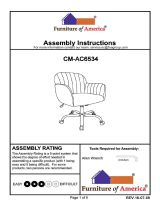 Furniture of America IDF-AC6534BK Installation guide
Furniture of America IDF-AC6534BK Installation guide
-
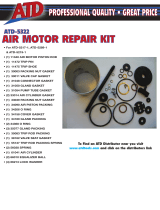 ATD Tools Weather Radio ATD 5322 User manual
ATD Tools Weather Radio ATD 5322 User manual
-
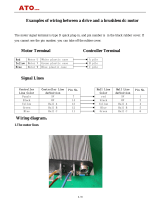 ATO BLDC Series User manual
ATO BLDC Series User manual
-
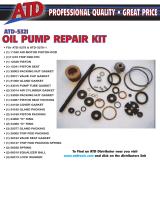 ATD Tools ATD-5321 User manual
ATD Tools ATD-5321 User manual
-
BodyCraft F605 F/I/D Owner's manual
-
Graco Inc. GH 733 User manual
-
Graco Inc. 308972 User manual
-
Asco Series 488 seal kits and repair User manual
-
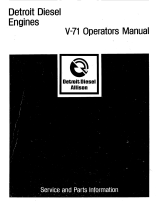 Detroit Diesel V 71 Series User manual
Detroit Diesel V 71 Series User manual
-
Hitachi 309379 User manual


















































